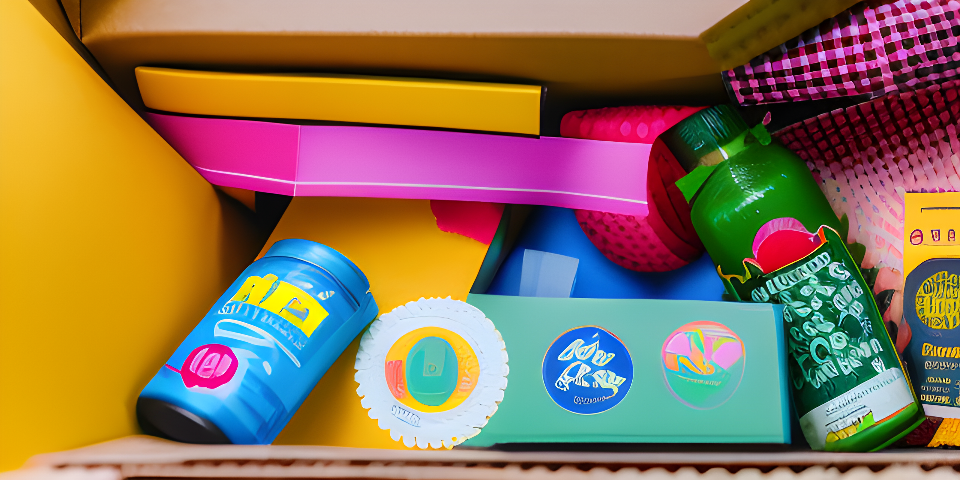
As the popularity of subscription boxes continues to grow, it’s becoming increasingly important for businesses to design successful subscription box according to subscription bundling strategies that not only meet customers’ needs but also exceed their expectations. In this article, we’ll explore the key elements of a successful subscription bundling, how to build a box, and the benefits of bundling for your subscription business and advantages of integrating with a product bundling app like Fast Bundle through our app, Subify.
Subscription Bundle Marketing Benefits
Subscription bundle marketing offers numerous advantages for businesses. By combining multiple products or services into a single package, brands can create unique value propositions. Key benefits include:
- Increased Customer Acquisition and Retention: Bundles attract new customers who are enticed by the added value and convenience. Additionally, bundled subscriptions often lead to improved customer retention rates as customers find value in the comprehensive offering.
- Higher Average Revenue per Customer: Bundling allows businesses to upsell and cross-sell complementary products or services, resulting in increased average revenue per customer.
- Enhanced Customer Lifetime Value (Growing Lifetime Value Subscription): By creating bundles that cater to customers’ ongoing needs, businesses can extend the customer lifecycle and maximize long-term revenue potential.
Why the Bundle Works for Brands
Subscription bundling is a powerful strategy for brands to differentiate themselves in the market and build customer loyalty. Here’s why the bundle works:
- Differentiation and Competitive Advantage: Bundling allows brands to stand out from competitors by offering unique combinations of products or services that address specific customer needs or pain points.
- Increased Customer Loyalty: By providing comprehensive solutions, subscription loyalty programs and tailored experiences, brands can foster stronger connections with customers, leading to increased loyalty and advocacy.
- Market Expansion and Diversification: Bundling enables businesses to enter new markets or expand their customer base by appealing to a wider range of customers with diverse needs.
Why the Bundle Works for Customers
Customers also benefit significantly from subscription bundling. Here’s why bundles are appealing to them:
Convenience and Cost Savings: Bundles offer convenience by consolidating multiple products or services into a single package, simplifying purchasing decisions. Moreover, customers often enjoy cost savings compared to purchasing individual offerings separately.
Curated Selection and Personalization: Bundles can be customized to cater to specific customer preferences, providing a curated selection of products or services that meet their unique requirements.
Discovery and Variety: Bundles offer customers a sense of discovery by introducing them to new products or services they might not have considered otherwise, resulting in a more engaging and exciting experience.
Making Subscription Bundling Strategies Strong
Subscription bundling has emerged as a powerful marketing strategy for businesses to attract and retain customers. In this article, we will explore key tactics and best practices for making subscription bundling strategies strong. By understanding the importance of a well-crafted subscription bundling strategy, businesses can maximize customer engagement, increase revenue, and gain a competitive edge.
Understanding Subscription Bundling Strategy
- Define subscription bundling strategy and its significance in the current market.
- Explain how subscription bundling involves combining multiple products or services into a single package to offer added value to customers.
- Highlight the potential benefits of a well-executed subscription bundling strategy, such as increased customer acquisition, retention, and revenue growth.
Analyzing Customer Needs and Preferences
- Emphasize the importance of understanding customer needs and preferences as the foundation of a strong subscription bundling strategy.
- Discuss the significance of market research, customer surveys, and data analysis in gaining insights into customer preferences.
- Highlight the role of customer segmentation in tailoring bundles to specific target audiences.
Identifying Complementary Offerings
- Explore the concept of product compatibility and complementary offerings in subscription bundling strategies.
- Discuss how bundling products or services that naturally complement each other enhances the overall value proposition for customers.
- Provide examples of successful bundling combinations and their impact on customer satisfaction and engagement.
Leveraging Data Analysis and Insights
- Discuss the role of data analysis in shaping subscription bundling strategies.
- Explain how businesses can leverage customer behavior data, purchase history, and preferences to inform bundle design and pricing.
- Highlight the importance of regularly analyzing data to refine and optimize bundling strategies based on customer feedback and market trends.
Pricing Strategies for Bundles
- Discuss various pricing strategies for subscription bundles.
- Explore the concept of tiered pricing, where different bundle options are offered at varying price points.
- Discuss the importance of balancing perceived value and affordability in pricing bundles to maximize customer appeal and profitability.
Promotions and Incentives
- Highlight the importance of promotions and incentives in driving customer adoption of subscription bundles.
- Explore strategies such as limited-time offers, exclusive discounts, and value-added incentives to entice customers to choose bundled subscriptions.
- Discuss the potential of cross-selling or upselling opportunities within the bundle to increase overall customer lifetime value.
Monitoring and Optimizing Performance
- Discuss the significance of monitoring key performance metrics to evaluate the success of subscription bundling strategies.
- Highlight metrics such as customer acquisition, retention rates, revenue per customer, and customer feedback.
- Emphasize the importance of gathering customer feedback and making iterative improvements to optimize the bundling strategy over time.
Staying Agile and Adapting to Customer Needs
- Discuss the importance of remaining agile and adaptable in subscription bundling strategies.
- Highlight the need to continuously assess customer needs, market trends, and competitive offerings to ensure the bundling strategy remains relevant and appealing.
- Encourage businesses to proactively seek customer feedback and make necessary adjustments to meet evolving customer expectations.
Tips To Design a Successful Subscription bundling
Subscription bundling offers businesses a powerful tool to attract and retain customers in today’s competitive market. To design a successful subscription bundling strategy, it’s essential to consider key factors that maximize customer engagement and drive revenue growth. In this article, we provide you with valuable tips to create compelling subscription bundles that captivate your audience and deliver exceptional value.
1. Define Your Target Audience
The first step before starting to design a successful subscription bundle is to know about cost of starting a subscription box business and then you should define your target audience.
- Who are they?
- What do they like?
- What are their pain points?
It’s important to understand the demographic and psychographic profile of your target customers in order to decide about subscription box design according to their needs.
To better understand your target audience, you can use data analytics tools and conduct customer surveys to gather insights into their preferences, needs, and purchasing behaviors. This will help you identify their pain points and determine the type of products and services that would appeal to them. Once you have a clear understanding of your target audience, you can start to design a box that meets their needs. This could include selecting products that align with their interests, lifestyle, and values.
The first step before starting to design a successful subscription bundle is to know about cost of starting a subscription box business and then you should define your target audience.
- Who are they?
- What do they like?
- What are their pain points?
It’s important to understand the demographic and psychographic profile of your target customers in order to decide about subscription box design according to their needs.
To better understand your target audience, you can use data analytics tools and conduct customer surveys to gather insights into their preferences, needs, and purchasing behaviors. This will help you identify their pain points and determine the type of products and services that would appeal to them. Once you have a clear understanding of your target audience, you can start to design a box that meets their needs. This could include selecting products that align with their interests, lifestyle, and values.
2. Choose Your Products Wisely
Once you’ve defined your target audience, it’s time to choose the products that will be included in your subscription bundle. When choosing products, it’s important to consider the following:
Quality:
The products you choose should be of high quality to ensure customer satisfaction. High-quality products not only add value to your subscription box but also enhance your brand reputation and customer loyalty.
Relevance:
The products should be relevant to your target audience and fit with the overall theme of your subscription box. For instance, if your target audience is eco-conscious, you may want to include eco-friendly products that align with their values and beliefs.
Variety:
The products should offer variety to keep customers interested and excited about what they will receive in each box. You can mix and match products of different categories, such as beauty, fashion, wellness, and food, to create a diverse and engaging subscription box experience.
To source high-quality products for your subscription box, you can work with suppliers and vendors who share your brand values and offer competitive pricing. You can also leverage the power of social media and influencer marketing to discover new products and reach out to potential partners.
3. Build a Box with a Theme
To create a cohesive experience for your customers, it’s important to build a box with a theme. This could be anything from a seasonal theme to a specific interest or hobby. A themed subscription box not only makes the unboxing experience more exciting but also helps to strengthen the emotional connection between your brand and your customers.
When choosing a theme for your subscription box, consider the subscription trends, upcoming holidays, and your target audience’s preferences
- For example, a subscription box for book lovers could have a theme of “cozy reading” and include items like a candle, a bookmark, and a cozy blanket.
- A subscription box for fitness enthusiasts could have a theme of “workout essentials” and include items like a water bottle, resistance bands, and energy bars.
4. Integrate with a Product Bundling App
Integrating with a product bundling app like Fast Bundle can make the process of building a subscription box even easier. By using our app, Subify, you can easily connect with Fast Bundle and choose products that fit with your theme and target audience. This can save you time and streamline the process of creating a successful subscription bundle.
With the integration of Subify and Fast Bundle, you can access a wide range of products from different suppliers and vendors and select the ones that best fit your target audience and theme. The app also provides real-time inventory and different subscription pricing models, enabling you to make informed decisions and optimize your product selection.
Additionally, the app offers customizable templates for packaging and branding, allowing you to create a professional and visually appealing subscription box that reflects your brand personality.
5. Offer Customization Options
To make your subscription box even more appealing to customers, consider offering customization options. This could include:
- Allowing customers to choose certain products or preferences such as their clothing size or dietary restrictions.
- By giving customers the power to personalize their subscription box, you can enhance their satisfaction as a customer loyalty program and differentiate your brand from competitors.
To implement customization options, you can use online surveys or customer feedback forms to collect customer preferences and integrate them into your product selection process. You can also leverage customer data analytics and segmentation to tailor your subscription box to different customer segments and increase the relevance and value of your offering.
Best Product Bundling Strategies in 2023
To stay ahead in 2023, businesses can consider the following product bundling strategies:
- Complementary Bundling: Combine products or services that naturally complement each other, providing a seamless and enhanced customer experience. For example, a streaming service bundled with a smart TV or a fitness tracker bundled with a personalized training program.
- Tiered Bundling: Offer different levels of bundles to cater to various customer segments. Each tier can provide different features or benefits, allowing customers to choose the bundle that best suits their needs and budget.
- Seasonal or Limited-Time Bundles: Design bundles that align with specific seasons, events, or promotions. This creates a sense of urgency and encourages customers to take advantage of the limited-time offer.
- Customizable Bundles: Allow customers to personalize their bundles by selecting specific items or services. This approach enhances the perceived value of the bundle and provides a more tailored experience for customers.
Conclusion
In conclusion, designing a successful subscription bundle requires careful consideration of your target audience, product selection, and box theme. By using data analytics, working with quality suppliers and vendors, and integrating with a product bundling app like Fast Bundle through Subify, you can create a subscription box that exceeds your customers’ expectations and keeps them coming back for more.
By offering customization options, you can enhance customer satisfaction and loyalty and stand out in a crowded market. With these key elements in mind, you can create a subscription box business that delivers value, quality, and excitement to your customers.


